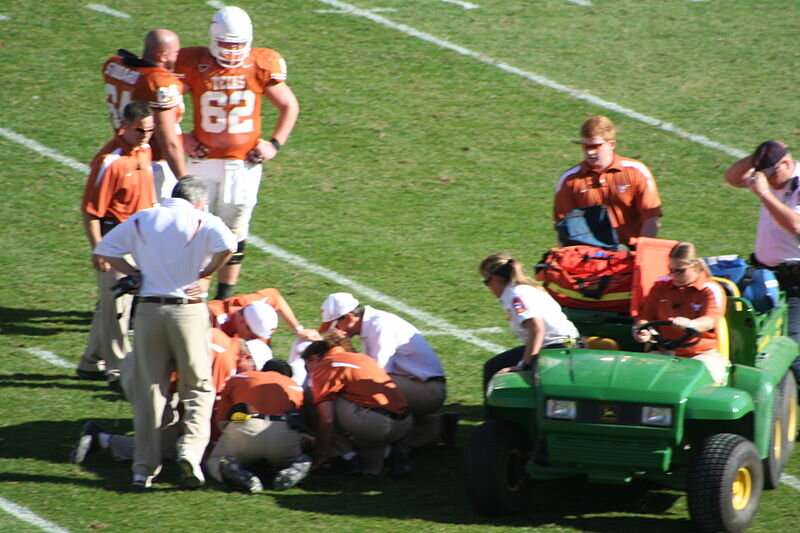This article has been reviewed according to Science X's editorial process and policies. Editors have highlighted the following attributes while ensuring the content's credibility:
fact-checked
trusted source
proofread
Viewpoint: How athletic training saves lives, from Damar Hamlin to youth athletes

I'm used to standing on the sidelines. I did it for 16 years as the athletic trainer (AT) for the Denver Broncos. Before each game, I identified where the ambulance was, confirmed all life-saving equipment worked properly and determined who the emergency contacts were at that particular NFL stadium. I almost never needed these things—almost.
As an athletic trainer, I lived on that line—the line between preparation and need, between readiness and action. So when I watched Buffalo Bills safety Damar Hamlin collapse on the field earlier this month, I remembered those times when I did need the emergency equipment to work, when I did need the ambulance.
In my case, it was a staff member who collapsed. I was summoned to come to his aid. I remember running from the athletic training room to the stadium concourse, where he was lying lifelessly. I remember being surprised at myself. I wasn't thinking. I wasn't telling myself what to do. I was just doing. Two additional ATs and I turned on the Automated External Defibrillator (AED), lifted his shirt, applied the patches, shouted "clear" and shocked his heart back into beating. He came to. It was an unexpected moment, but it was one I had trained for, and that training took over.
In the days after Hamlin collapsed, details emerged. He suffered a cardiac event on the field—a condition rarely seen in football. Essentially, blunt trauma directly to his heart at a specific moment in the heartbeat cycle sent the organ into an arrhythmia. His life was saved by a quick-thinking, highly qualified athletic trainer. I wasn't surprised; I had seen it before. I had been there before.
Athletic trainers learn, prepare and practice just for these times when the unexpected happens. At NAU, our athletic training program is the largest in the nation. We are preparing individuals to save lives and prevent and recover from injuries at all levels of sports, but more importantly, I'd argue, are the graduates we send to high schools and those supporting youth sports.
Day in and day out, athletic trainers are educating kids on wellness, assessing their physical injuries, providing therapeutic interventions and saving lives. The stages aren't always as extensive as was the case of the AT who saved the life of Damar Hamlin, but they are no less important. The NAU students are used to hearing our faculty stress the importance of athletic trainers in high school and youth sports settings. There isn't always funding or even an understanding of why they are needed, but instances like Damar Hamlin's shine a bright light on the importance and value of ATs.
The past few weeks have led me to reflect a great deal on my career in the field, and while it may seem like these significant, life-saving moments define my career, they don't. It's the relationships I built with athletes, during their athletic journey, in the good times and bad. It's seeing someone get hurt and not just recover but return to their sport and thrive.
This week, Damar Hamlin tweeted his desire to be back on the field with his teammates. I hope he gets there. I know I will be watching, proud of my comrades in athletic training and our students, who continue to practice and remain prepared to assist with the next injury or life-changing event.
Dr. Corey Oshikoya is an instructor in the Department of Physical Therapy and Athletic Training. In addition to his experience as an athletic trainer in the NFL, his dissertation research looked at the cultural competency of athletic training education and produced a self-assessment tool to help health care professional investigate their ability to teach in a culturally competent manner and create a culturally inclusive classroom.


















